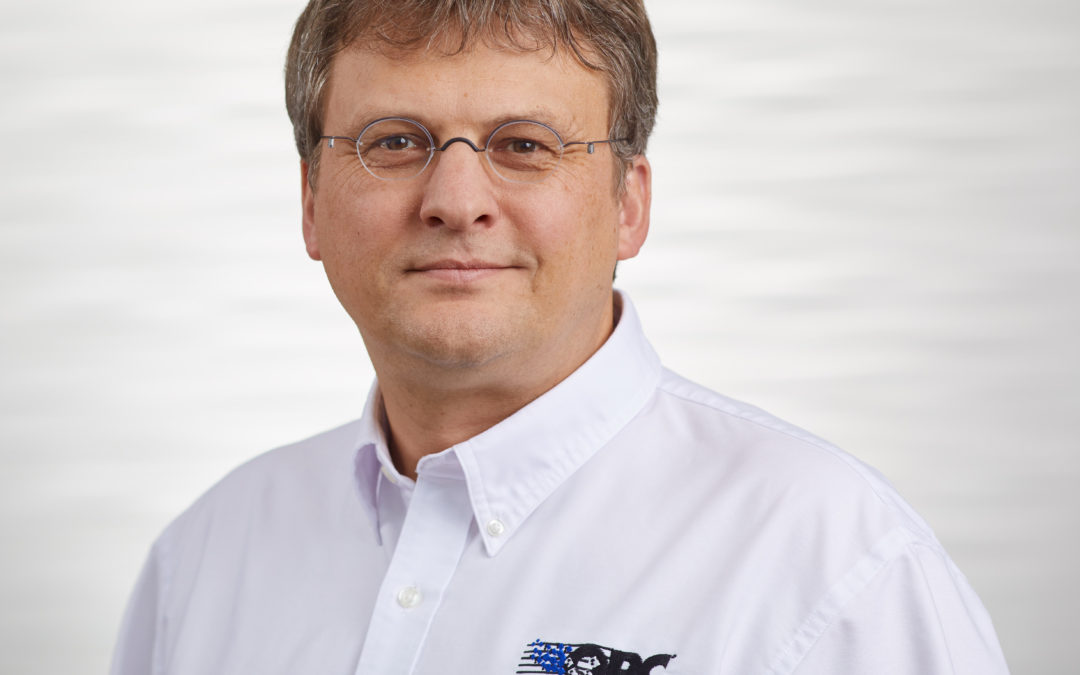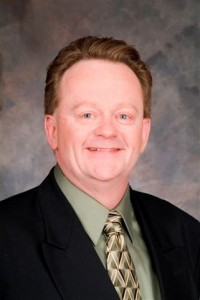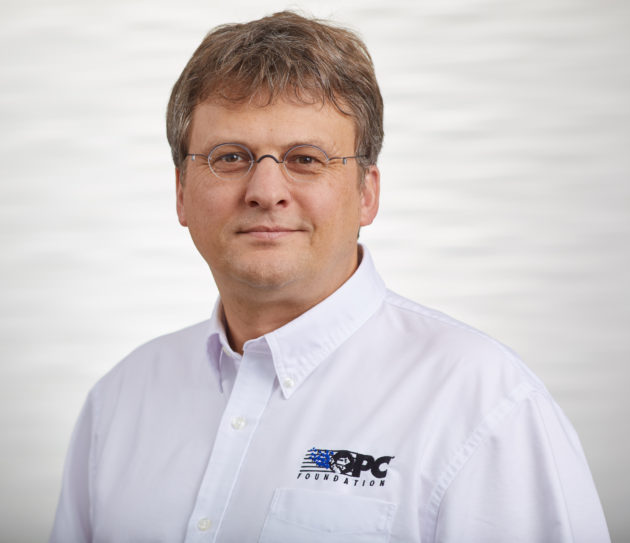
by Gary Mintchell | Nov 23, 2018 | Automation, Networking, Standards, Technology
I will only be at SPS for a few hours this year to check in with old friends and see some of the latest automation goodies. But I’m glad to be there at all. Thank you to Siemens who is sponsoring a press tour that includes a couple of days of intense cybersecurity briefings and workshops.
Oh, and a trip to Allianz Stadium to see the technology and a Bayern Munchen football match.
Some early SPS news:
- Avnu Alliance Demonstrates New Conformance Test Reference Tool
- OPC Foundation promises much news plus addition of Rockwell Automation
OPC Foundation
OPC Foundation has sent a couple of emails inviting us to a press briefing at SPS promising much news. I won’t be in Nuremberg on Tuesday, but I’ll catch up with Stefan and Tom for sure on Wednesday.
The mating dance has ended after a few months. Rockwell Automation has rejoined the OPC Foundation and gained a board seat. OPC Foundation has elected Juergen Weinhofer, vice president of common architecture and technology for Rockwell Automation, to its board of directors. Note that Weinhofer is also the Rockwell delegate to the ODVA board.
Weinhofer’s election to the board extends Rockwell Automation’s engagement in the technical work of the OPC Foundation and its technical advisory council.
“OPC UA has become the dominant open protocol for machine-to-software and machine-to-cloud solutions, and it is becoming critical for companies deploying a Connected Enterprise,” Weinhofer said. “I look forward to helping the OPC Foundation become a leader in machine-to-machine applications and helping OPC UA users unlock more value from their production systems.”
This quote is from the OPC news release. We should note that “Connected Enterprise” (capitalized) is the Rockwell Automation theme. I also note while parsing the comment that Rockwell is still firmly fixed in the factory floor area where Weinhofer specifically states “become a leader in machine-to-machine applications.”
“Rockwell Automation is a proven leader in industry standardization and open information technologies,” said Stefan Hoppe, president of the OPC Foundation. “I welcome not just Juergen’s business and political skills on the board but also the increased technical and commercial contribution that the wider Rockwell Automation team will also bring to the foundation.”
Avnu Alliance
Avnu Alliance, an industry consortium enabling open, standards-based deterministic networking, will exhibit at SPS IPC Drives in the University Stuttgart ISW booth. Avnu Alliance, alongside ISW and Industrial Internet Consortium (IIC), will showcase the role of conformance test plans, testbeds and test reference tools in ensuring an interoperable ecosystem of Time Sensitive Networking (TSN) devices.
“We are in cooperation with IIC, IEEE, IEC and others in creating an interoperable ecosystem through a common network foundation that stems from industry open standards and testing,” said Todd Walter, Avnu Alliance Industrial Segment Chair. “The market will continue to require multiple application layer protocols for networked industrial systems. The Avnu Alliance charter is to enable interoperability at the network layer, to ensure ‘One TSN.’ We are the organization focused on providing TSN test plans and reference test architectures to anyone in the industry that wants to test for TSN compatibility.”
As such, Avnu serves to support Fieldbus organizations by providing its TSN conformance tests and procedures to ensure those organizations’ interoperability in the wider Ethernet system.
Leveraging the industry-defined requirements for TSN network interoperability, Avnu ensures there is a universal set of test plans for conformance to guarantee interoperability at the network layer. Avnu has developed a baseline test plan in the industrial market that ensures industrial devices, whether end device, infrastructure component or silicon, conform to the relevant IEEE standards, as well as the industrial automation profile being defined by IEC/IEEE 60802 Joint Project working group.
Starting with Time Synchronization, or 802.1AS as the foundation for all TSN devices, Avnu released the first set of test plans at SPS IPC Drives in 2017. Avnu will soon publish additional conformance test plans for end devices, such as enhancements for scheduled traffic.
At SPS IPC Drives 2018, Avnu Alliance will show a new proof-of-concept (POC) Conformance Test Reference Design that offers a single, streamlined way for vendors to test TSN interoperability. The POC Conformance Test Reference Design is designed to automatically test TSN devices for compliance to 802.1AS. The demonstration features a Linux open-source test tool created by ISW in partnership with Avnu. This tool would also allow other protocol organizations to test application stacks on top of a TSN network in a streamlined way enabling one-stop certification at any test house.

by Gary Mintchell | Nov 5, 2018 | Internet of Things, Manufacturing IT, Standards
OPC UA and TSN (Time Sensitive Network). A marriage I was beginning to think was never going to happen. I wrote a preliminary white paper following Hannover Messe 2017. Yes, more than a year ago. (Check it out by clicking the small ad on the sidebar.) This thing has been like a ball in a Rugby match—kicked, going different directions, downed and picked up. People wanting to move before thinking. Getting caught up in legal issues and “politics.” Postponed press conferences.
And, now…”The OPC Foundation launches an initiative to further enable OPC UA adoption throughout industrial automation by extending standardization and harmonization activities for OPC UA including TSN-enabled Ethernet networks.”
The goal of this initiative is to deliver an open, cohesive approach to implement OPC UA including TSN and associated application profiles. This will advance the OPC Foundation providing vendor independent end-to-end interoperability into field level devices for all relevant industry automation use-cases. The OPC Foundation vision of becoming the worldwide industrial interoperability standard is advanced by integrating field devices and the shop floor.
A new set of working groups will identify, manage and standardize the OPC UA relevant topics focused on industrial automation including,
• harmonization and standardization of application profiles e.g. IO, motion control, safety, system redundancy
• standardization of OPC UA information models for field level devices in offline e.g. device description and online e.g. diagnostics
• mapping of OPC UA application profiles related to real-time operations on ethernet networks including TSN
• definition of certification procedures
The working groups will closely align with the TSN Profile for Industrial Automation (TSN-IA-Profile) which will be standardized by the IEC/IEEE 60802 standardization group. This will help ensure that a single, converged TSN network approach is maintained so that OPC UA can share one common multi-vendor TSN network infrastructure together with other applications.
This initiative integrates well with existing joint working groups engaged in ongoing companion specification e.g. description of machines.
Stefan Hoppe, President of the OPC Foundation said “The benefit of membership in the OPC Foundation allows companies to actively engage and influence the direction of the OPC Foundation and includes early access to the specifications and technology. This initiative will grow OPC UA into new markets and I highly encourage all OPC Foundation members to contact the OPC Foundation to participate”.
Thomas Burke, Strategic Marketing Officer of the OPC Foundation, “We are very excited about the initiative to extend OPC UA including TSN down to the field level, and the number of companies that want to actively participate in this initiative bringing the technology into real world products. This set of working groups will pave the way for the broadest, easiest, and fastest market adoption of OPC UA over TSN.”
The OPC Foundation develops and maintains OPC UA as an open and secure communication platform comprised of an information model framework, communication models and underlying protocol bindings. As such, the OPC Foundation works non-exclusively with other organizations on various OPC UA related topics but continues to operate as a platform, technology, use case, and vendor agnostic standardization body.

by Gary Mintchell | Oct 31, 2018 | News, Organizations
Tom Burke stepped down as President and Executive Director of the OPC Foundation after 23 years of leadership. He will remain on the Board of Directors continuing his global evangelization for the standard.

Stefan Hoppe, currently a vice president of the organization, becomes the new President and Executive Director. This follows on the recent news that the Board created a new Chair position and elected Veronika Schmid-Lutz of SAP to that position.

Hoppe is a familiar face in the community through his work as VP of Marketing for the past four years.
He joined BECKHOFF in 1995 where he developed OPC classic server and in 2006 the first OPC UA server integrated into an embedded controller. In 2008 he initiated and chaired the PLCopen OPC UA Companion working group. In 2010 Mr. Hoppe was elected President of OPC Foundation Europe. Since 2014, he is Vice President of the OPC Foundation and member of the OPC Board.
Hoppe said “It is truly an honor to be entrusted with the responsibility and exciting opportunity to lead this incredible global organization towards its full potential. While the OPC Foundation roots come from industrial automation and will always be grounded there, I believe it is our duty to greatly widen our horizons in multiple directions – inside industrial automation but also into other new markets.“
On the future adoption of the OPC technology Mr. Hoppe continued, “the value of the open, secure, vendor independent data interoperability the OPC UA standard introduces is universal and is as important to IoT applications across all markets as Ethernet was to connect computers and is to the Internet. My mission is to position and grow the OPC Foundation to work on this scale.”
Elaborating on his decision to change roles, Burke said, “After an amazing 23 years, I have decided it is time to turn over the reins of the day-to-day operations as the President and Executive Director of the OPC Foundation to the next generation. I believe Stefan Hoppe is the right person for this job as he has clearly demonstrated his commitment and strong leadership on many occasions. I look forward to him advancing the OPC Foundation and its OPC UA technology.”
Hoppe concluded “On behalf of the OPC Foundation I sincerely thank Thomas Burke for the vision, leadership, and tireless evangelism he provided all these years. It was great to work with Thomas Burke for the last 8 years and I appreciate his decision to continue his worldwide OPC UA evangelization and contribution of his deep valued insights and strategic advice.”
I am not surprised by the changes. I’ve worked closely with Tom for many years. I’ve also known Stefan since his days at Beckhoff Automation. His presentations for OPC UA have increasingly become less German-centric remaining a powerful statement of the value of standards for the successful implementation of Industry 4.0 and Digital Transformation.
I view this transition as a classic move from the entrepreneur to management. In the end it will be a positive step for the organization. I wish them all well.

by Gary Mintchell | Sep 4, 2018 | Education, News, Organizations
 OPC Foundation’s continuous improvement program extended with the addition of new Chair for its Board of Directors. I haven’t had an OPC Foundation conversation since April. Based on conversations with numerous leaders in Hannover, I think this is a great step forward by the Foundation’s board of directors. I’m not sure what precipitated the addition, but I’ve met Schmid-Lutz and she’ll do an excellent job of bringing cohesiveness and direction to the organization.
OPC Foundation’s continuous improvement program extended with the addition of new Chair for its Board of Directors. I haven’t had an OPC Foundation conversation since April. Based on conversations with numerous leaders in Hannover, I think this is a great step forward by the Foundation’s board of directors. I’m not sure what precipitated the addition, but I’ve met Schmid-Lutz and she’ll do an excellent job of bringing cohesiveness and direction to the organization.
OPC UA is solid technology used by most automation and IoT companies. These moves to strengthen the organization can only be positive.
This from the original press release—In this key position, the Chair manages the strategic and tactical directives of the Board of Directors and ensures the marketing, technical, and overall business activities of the OPC Foundation consistently align with its vision and objectives. In addition, the Chair organizes and calls the Board of Directors meetings and engages directly with the organization’s infrastructure. The Chair position requires a dynamic leader who can navigate the political, business, and technical challenges associated with a standard setting organization.
Veronika Schmid-Lutz was honored by the trust and confidence placed in her by her fellow board members and noted that “being elected as the Chair of the OPC Foundation’s board is a great honor for me. My focus will be to strengthen and pursuing all aspects that make interoperability between devices, machines, and business systems as simple and as secure as possible.”
Thomas J. Burke, President of the OPC Foundation commented on the importance of the Chair position and why Ms. Schmid-Lutz was the right person to fill it, “Veronika clearly demonstrated her excellent leadership and business skills as a member of the OPC Foundation Board of Directors. Based on this I believe she is well suited to now serve as the Board’s Chair. With Veronika at the helm of the business, I look forward to see her facilitate and successfully drive the OPC Foundation vision into the next era.” Mr. Burke concluded saying “It’s a great honor to have Veronika accept this important leadership role. We look forward to see her oversee communicating the importance of OPC UA into the IT world.”
Recognizing the value of both the organization and its deliverables, Veronika Schmid-Lutz emphasized the importance of OPC UA by noting: “Easy interoperability is an important enabler for intelligent systems leveraging new technologies in software and hardware. SAP strongly supports OPC UA as it simplifies and accelerates information exchange between heterogeneous systems and devices which is why Platform Industrie 4.0 has made OPC-UA a key component of its RAMI architecture. The board looks forward to continue enhancing the value of both the organization and its deliverables.”

by Gary Mintchell | Feb 19, 2018 | Automation, News, Organizations, Technology
The OPC Foundation was active during the recent ARC Industry Forum in Orlando as a Platinum Sponsor and presenting a press conference. With OPC UA released and in use and the publish/subscribe about to be release, OPC Foundation’s emphasis has been on companion specifications. It had a joint press conference with the FieldComm group to discuss its joint working group and then released news of a released companion specification with Ethernet Powerlink. The last release, something I was able to work on pre-release review, concerns a study with ARC Advisory Group on adoption of the UA specification.
Below are some details. More at the Foundation website.
OPC and FieldComm
The OPC Foundation and FieldComm Group announced an alliance to advance process automation system multi-vendor interoperability and simplified integration by developing a standardized process automation device information model.
A joint working group between OPC Foundation and FieldComm Group, tasked with developing a protocol independent companion specification for process automation devices, was formed in late 2017. The goal of the working group is to leverage the extensive experience of FieldComm Group with the HART and FOUNDATION Fieldbus communication protocols to standardize data, information, and methods for all process automation devices through FDI using OPC UA. The OPC UA base information model and companion Device Information (DI) specification will be extended to include the generic definition and information associated with process automation devices.
The OPC Foundation and FieldComm Group have worked together for over a decade, initially working on the development of the EDDL specification and most recently on the creation of FDI technology.
“FDI provides the new standard for device integration to deliver a protocol independent path to configuration, diagnostics and runtime operation for process devices,” states Ted Masters, President and CEO of FieldComm Group. “The partnership between OPC Foundation and FieldComm Group further builds upon the common information model of both to deliver process automation data in context which is the key to enabling value from enterprise systems and analytics. The 350+ suppliers of devices and applications that are members of FieldComm Group have an opportunity to benefit from the key initiative to develop a standard process automation information model by their adoption of FDI and OPC UA technologies.”
“I’m excited that the OPC Foundation and FieldComm Group are working together on this important initiative, and will be partnering with other organizations, end-users and suppliers to make the dream of a standardized process automation device information model a reality. This is truly a breakthrough in our industry that will provide significant operational benefits across all points of the value chain,” states Thomas J. Burke, OPC Foundation President and Executive Director.
“This important collaboration will provide a solid foundation for standardization of devices that will serve as the base infrastructure for the numerous other collaborations that the OPC Foundation is doing across international boundaries,” says Stefan Hoppe, OPC Foundation Global Vice President.
The joint working group plans to release an extensible, future-proof process automation information model specification during the first quarter of 2019.
OPC and Powerlink
An OPC UA companion specification is now available for POWERLINK according to a joint announcement by the OPC Foundation and the Ethernet POWERLINK Standardization Group (EPSG). The companion specification describes how payload data is exchanged between POWERLINK and any OPC UA platform. The result is integrated communication from the sensor to the cloud.
“As technologies, OPC UA and POWERLINK complement each other perfectly,” emphasized Thomas Burke, President of the OPC Foundation, in his announcement. “POWERLINK is among the leading real-time bus systems used in plants and machinery. Together with OPC UA, POWERLINK networks can now communicate seamlessly and securely with the IT environment and into the cloud.”
“This specification allows OPC UA and POWERLINK to fuse into a single network,” added Stefan Schönegger, Managing Director of the EPSG. “We’re then able to join devices from different manufacturers and across different levels of the automation pyramid into a single, cohesive system.”
A joint working group between the OPC Foundation and the EPSG had been working on the specification since 2016. The document can be downloaded from the OPC Foundation website.
OPC UA Adoption
OPC Foundation announced today the release of an in-depth ARC Advisory Group report on the important role the OPC data connectivity standards play in control automation today and in future IIoT and Industrie4.0 based solutions.
Key ARC report findings confirmed that with an estimated global install base of over 45 million units, OPC is the de facto standard for open data connectivity and that OPC UA is well positioned to serve as the next data connectivity foundation for control automation applications in traditional industrial settings and new ones like building automation, transportation, and others. Key contributing factors to the continued success of OPC UA included the scalability, performance, and robustness of the technology and the large community of end-users, vendors, and other standards bodies actively working with the OPC Foundation to best utilize OPC UA in their applications.
According to Thomas Burke, OPC Foundation president, “the [ARC report] findings accurately reflect what we [OPC Foundation] have been seeing from an adoption and collaboration point of view. I highly recommend reading this ARC report for a high level perspective of what OPC UA is doing in the market and the future of data connectivity”
Commenting on the popularity of the OPC UA standard, Mr.Burke explained “OPC UA has something to offer for everyone from end-users and product vendors to other standards bodies. After people look at what is really out there as far as a single standard that has the scalability, performance, and flexibility to meet the challenges of modern data connectivity and interoperability and has the reputation and a large enough adoption base needed to make it a safe investment – they come to realize OPC UA is the real deal.”
“OPC technology has become a de facto global standard for moving data from industrial controls to visualization up to MES/ERP and IT cloud levels”, according to Craig Resnick, Vice President, ARC Advisory Group. “The rapid expansion of OPC UA in automation, IIoT, and into new, non-industrial markets suggests that OPC will remain an important technology for multivendor secured interoperability, plant floor-to-enterprise information integration, and a host of other applications yet to be envisioned.”







 OPC Foundation’s continuous improvement program extended with the addition of new Chair for its Board of Directors. I haven’t had an OPC Foundation conversation since April. Based on conversations with numerous leaders in Hannover, I think this is a great step forward by the Foundation’s board of directors. I’m not sure what precipitated the addition, but I’ve met Schmid-Lutz and she’ll do an excellent job of bringing cohesiveness and direction to the organization.
OPC Foundation’s continuous improvement program extended with the addition of new Chair for its Board of Directors. I haven’t had an OPC Foundation conversation since April. Based on conversations with numerous leaders in Hannover, I think this is a great step forward by the Foundation’s board of directors. I’m not sure what precipitated the addition, but I’ve met Schmid-Lutz and she’ll do an excellent job of bringing cohesiveness and direction to the organization.



